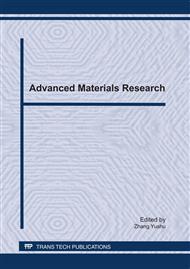p.58
p.63
p.68
p.73
p.78
p.83
p.88
p.93
p.98
Esterification of Polypropylene Fiber and its Adsorption of Phthalate Esters
Abstract:
In this work, an acrylic-polypropylene grafting copolymer (PP-g-AA) was prepared by 60Co γ-rays irradiation grafting with acrylic acid (AA) onto polypropylene (PP) fiber. The esterification PP-g-AA fiber (PP-g-COOR) was prepared by the esterification of PP-g-AA with C8 alcohol via SOCl2 as the intermediate. The PP-g-COOR fiber was utilized to adsorb and enrich trace dibutyl phthalate (DBP) in water. The results indicated that PP-g-COOR fiber exhibited a good adsorption property of DBP. The adsorption property of PP-g-COOR fiber was greatly enlarged 25 times than the PP-g-AA. The distribution coefficient of DBP on PP-g-COOR fiber depended on the pH values of aqueous phase and the initial concentration of DBP. In general, the PP-g-COOR fiber was better for the adsorption and enrichment of DBP.
Info:
Periodical:
Pages:
78-82
Citation:
Online since:
February 2011
Authors:
Price:
Сopyright:
© 2011 Trans Tech Publications Ltd. All Rights Reserved
Share:
Citation:


